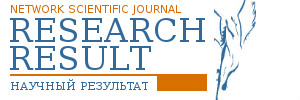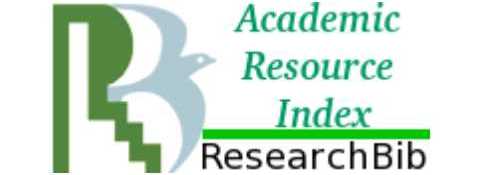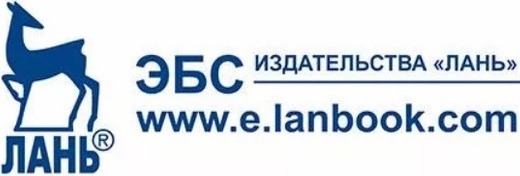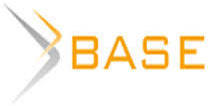Psychosemiotic analysis of the system of relations between intellectual property and innovative activity of the individual
Introduction. In the article, the system of relations between intellectual property and innovative activity of an individual is presented as an integral semiotic structure of text components of narratives. From the standpoint of constructivism, intellectual property is viewed as a narrative space in which respondents form the meaning and significance of the system of relations between intellectual property and innovative activity. The purpose of our research: To identify attitudes towards intellectual property and to show how, in the process of semiosis, the system of relations between intellectual property and innovative activity becomes part of the consciousness of respondents and how the metatext acquires the subjective significance of the whole. Materials and methods: The authors compiled interview questions for scientists and students about the significance and use of intellectual property in their lives. They then conducted a narrative analysis, interpreting the results using Peirce's semitic triads. The diagnosis of innovation activity was carried out using the Scale of Self-assessment of Innovative Personality Traits (N.M. Lebedeva, A.N. Tatarko). Results of the study and their discussion: The interpretations of the respondents' answers made it possible to outline the semantic field of the system of relations between intellectual property and innovative activity of the individual. The respondents' attitude to intellectual property is considered not only as an individual, but also as a particular manifestation of the social. Intellectual property can act as an indicator of a person's achievements and recognition in society. It demonstrates respect from others and confirms the individual's exclusivity and innovativeness. It is associated with a sense of responsibility for one's intellectual product and requires discipline and self-regulation. It is the result of innovative activity. At the same time, there are differences in the narratives of scientists and students. In the opinion of doctors of science, intellectual property is connected more with moral satisfaction and the realisation of professional ambitions. It is energetically expensive but does not generate material wealth. In the opinion of the surveyed students, intellectual property is a more generalised and abstract concept that increases self-esteem and reputation and generates income. Conclusion. New perspectives on the phenomenon of self-realisation as an individual and social process, through which a person can find personal meaning, were revealed. The sign nature of the system of intellectual property relations and components of the individual's innovative activity as a process of semiosis was investigated.

















While nobody left any comments to this publication.
You can be first.
Galperin, L.B. and Mikhailova, L.A. (1992), “Intellectual property: its essence and legal nature”, Pravo promishlennoy i intellektualnoy sobstvennosti, 3-12. (In Russian).
Grishaev, S.P. (2009), Intellektualnaya sobstvennost [Intellectual property], Yurist, Moscow, Russia.
Grishina, N.V. (2021) “Personality Variability: a Theoretical Construct and empirical phenomenology”, Novie psikhologicheskie issledovaniya, 2, 46-63. (In Russian).
Ivanova, E.A. (2009), “Ethnopsychological features of Russians' attitude to intellectual property”, Psikhologicheskie innovatsii v ekonomike i finansah, 129-132. (In Russian).
Karnishev, A.D. and Ivanova, E.A. (2011), “Features and problems of intellectual property and innovation”, Vestnik Buryatskogo gosudarstvennogo universiteta, 5. 44-54. (In Russian).
Kitova, A.D. and Shakov, A.M. (2017), “Attitude to property as a subject of psychological research”, Gumanizatsiya obrazovaniya, 1, 74-80. (In Russian).
Polyakov, R.E. (2011), “Analysis of the definition of “intellectual property””, Molodoy ucheny, 1 (10), 176-179. (In Russian).
Terekhova, T.A. (2015), “The concept of the structure of individual innovation activity”, Psikhologiya v ekonomike i upravlenii, 7 (1), 5-15. (In Russian).
Terekhova, T.A. and Trofimova, E.L. (2024), “Motivational Determination of the System of Relations Between Intellectual Property and Innovative Activity of the Individual”, Baikal Research Journal, 15 (3), 1363-1371. (In Russian).
Shishkina, A.O. (2015), “Psychometric analysis of individual innovation activity”, Psikhologiya v ekonomike i upravlenii, 7 (1), 52-57. (In Russian).
Andersch, N. (2023), “Semiotics in psychiatry and psychology”, Bloomsbury Semiotics, 2, 143-163. (In UK).
Apter, M.J. and Smith, К.С.Р. (1977), “Humour and the theory of psychological reversals” In: Chapman A. J., Foot H. C. (eds.) Oxford: Pergamon Press, 95-100. (In UK).
Basadur, M. and Hausdorf P. (1996), “Measuring Divergent Thinking Attitudes Related to Creative Problem Solving and Innovation Management”, Creativity Research Journal, 9 (1), 21-32. (In UK).
Zlatev, J. (2015), Cognitive Semiotics, International Handbook of Semiotics / in P. P. Trifonas (ed.), Berlin: Springer.op. cit., 1043-1067. (In UK).
Kramer, S. and Amabile, T. (2011), “The Progress Principle”, Harvard Business Review Press. (In UK).
Cristalli, C. (2017), “Experimental Psychology and the Practice of Logic: Charles S. Peirce and the Charge of Psychologism”, European Journal of Pragmatism and American Philosophy, 9 (1), 1869-1885. (In UK).